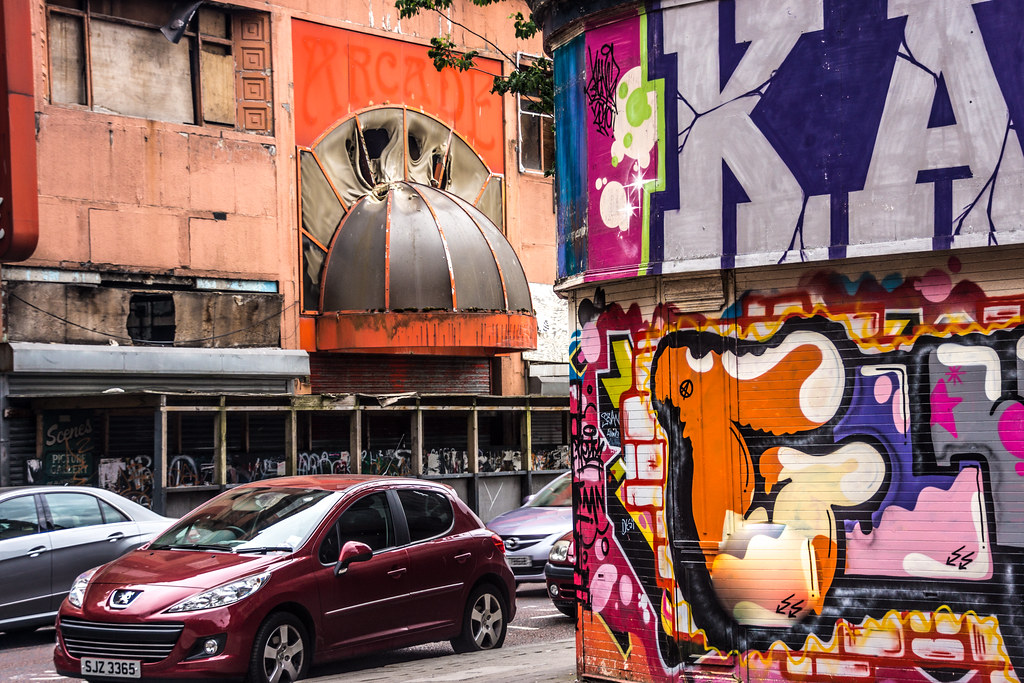URBAN EXPRESSION AND DEPRESSION
On my first visit to the city I was impressed by how clean and tidy the place was and I came away believing that in general Belfast was much more attractive than Dublin.
During my following visits, as I had extended the scope of my project, I began to realise that while the shopping and tourist areas were attractive I did not have to travel far to locate major examples of serious urban neglect and decay. Even within the more attractive commercial heart of the city there was a number of large derelict, unoccupied or abandoned buildings. All one needs to do to see what I mean is to walk from one end of Great Victoria Street to the other end. The middle section of the street is relatively interesting and attractive and both ends are ugly and appear to host much anti-social activity including on the street drinking late at night. I actually stayed at three hotels on this street: The IBIS, The Europa and the ETAP and with the exception of the Europa anti-social behaviour late at night was a major issue.
According to a recent report: “Over the last 35 years the population of Belfast has decreased by 35%, while the population of surrounding commuter districts has increased significantly. This decline in population is particularly evident in inner and central city areas which have been decimated by the impacts of road infrastructure, low density housing redevelopment and the proliferation of car parks. The more intact historic centre is now seen as a ‘utility’ space; a place to work or shop in, but not a place to live in, to own, or to celebrate our civic identity.”
During my following visits, as I had extended the scope of my project, I began to realise that while the shopping and tourist areas were attractive I did not have to travel far to locate major examples of serious urban neglect and decay. Even within the more attractive commercial heart of the city there was a number of large derelict, unoccupied or abandoned buildings. All one needs to do to see what I mean is to walk from one end of Great Victoria Street to the other end. The middle section of the street is relatively interesting and attractive and both ends are ugly and appear to host much anti-social activity including on the street drinking late at night. I actually stayed at three hotels on this street: The IBIS, The Europa and the ETAP and with the exception of the Europa anti-social behaviour late at night was a major issue.
According to a recent report: “Over the last 35 years the population of Belfast has decreased by 35%, while the population of surrounding commuter districts has increased significantly. This decline in population is particularly evident in inner and central city areas which have been decimated by the impacts of road infrastructure, low density housing redevelopment and the proliferation of car parks. The more intact historic centre is now seen as a ‘utility’ space; a place to work or shop in, but not a place to live in, to own, or to celebrate our civic identity.”
SORRY FOR THE DELAY
